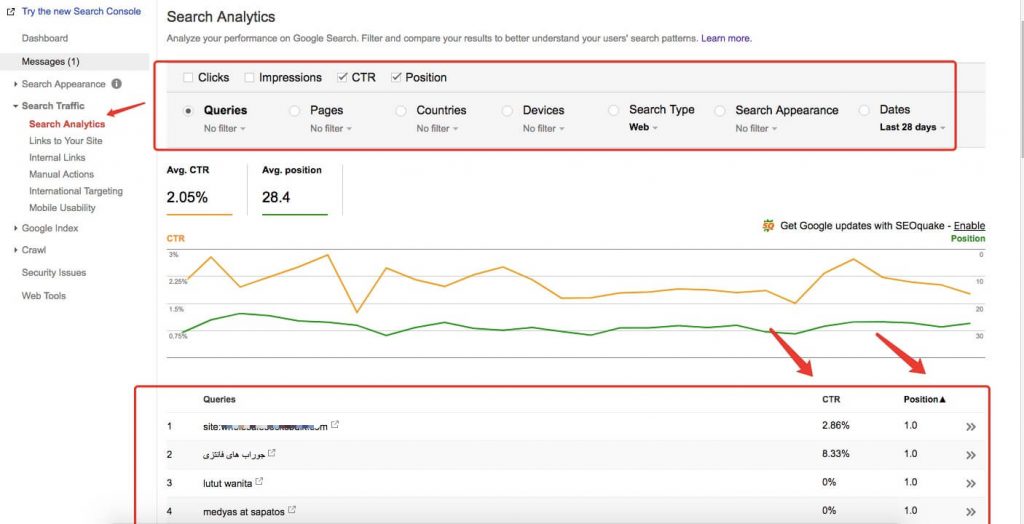- Use the Title Tag Preview Tool skillfully
If the page title is too long, search engines may omit it by adding an ellipsis (“…”), which can easily make important words overlooked.
If the title of the web page is too short, it will waste weight.
Wondering what your page title looks like on Google Chrome?
Moz developed the Title Tag Preview Tool (moz.com/learn/seo/title-tag)
Just enter your web page title in it, and it will preview the results displayed on Google.
According to the preview results, you can improve the title tag appropriately! - Add an SSL certificate to the website
An SSL certificate is used to encrypt the HTTP protocol, which is HTTPS.
At present, many browsers including chrome will display unsafe links to http, and it is very likely that http pages will not be opened directly in the future.
Therefore, accessing websites through https has become an inevitable trend in the future. It is recommended that friends who have personal websites must install an SSL certificate. - Use Wikipedia to find keywords and topics
For keywords that competitors have not yet targeted, SEO is less difficult and easier to optimize for ranking.
So, how to be the first to dig out good new keywords?
First of all, stop using keyword tools like Google Keyword Planner and Kwfinder, because they basically give close variants of some keywords.
Then, go to Wikipedia wikipedia.org: (insurance is used as an example below)
1) Enter the keyword insurance on the homepage and click Search

2) View on the search results page:
“Contents” section

Sidebar:

Internal link:

“See also” section:

Usually, you can get a lot of keyword and topic suggestions from it, of course, just click on a relevant internal link and repeat the above steps to get more in turn.
- Use search commands to find high-quality related blogs
High-quality, highly relevant blog links have a great impact on keyword rankings.
So how do you find these blog posts?
Here is a summary of the following search commands:
- “[fusion_builder_container hundred_percent=”yes” overflow=”visible”][fusion_builder_row][fusion_builder_column type=”1_1″ background_position=”left top” background_color=”” border_size=”” border_color=”” border_style=”solid” spacing=”yes” background_image=”” background_repeat=”no-repeat” padding=”” margin_top=”0px” margin_bottom=”0px” class=”” id=”” animation_type=”” animation_speed=”0.3″ animation_direction=”left” hide_on_mobile=”no” center_content=”no” min_height=”none”][keyword] blogs to follow”
- “best [keyword] posts 2018”
- “top [keyword] blogs to follow” + “2018”
For example, I googled [yoga] blogs to follow and got these results:

5.Publish long content
According to relevant research abroad, the average word count of a webpage on the Google homepage is 1890 words.
The relationship between page word count and Google ranking can be represented by the following line graph:

Moreover, long content also performs well in mobile search.
ok, why does long-form content work?
First, long articles send a signal to Google: you provide searchers with more in-depth information, and your content has more depth and value;
Second, long-form content is more engaging and more likely to evoke awe in readers, and according to University of Pennsylvania research, content that evokes awe is 30% more likely to be shared than the average!
Therefore, we suggest that when you publish blog articles or guest blogs on the website, you must ensure that the number of words is 1800+. In this way, the depth and quality of your articles must be good, the keyword layout will be more perfect and more reasonable, and the amount of sharing and external links will also be improved. It will be very impressive, and the ranking will naturally go up.
In addition, some friends may say that my ordinary product description can’t write so many words, ok, it doesn’t matter, as long as it is based on user experience, the user’s concerns are taken into account and written in as much as possible, and the number of words should also be 400. +, is also possible;
There are not many pages, but the essence!
For products with little difference, or even just inconsistent appearance, try to integrate them into one page, a long page is much better than several similar short pages!
- Encourage user comments
It is recommended that you enable comments on both product and blog pages.
Encouraging user comments, on the one hand, can gain insight into user needs and improve products or services; on the other hand, it can send a signal to Google: your product or article is very popular, and it is very helpful for the SEO of the page.
If you find too many spam comments, add a verification code to filter out spam comments. - Pay attention to image optimization
Images are important in Google’s search engine (after all, Google has a dedicated image search feature).
So, how do we make our products appear in user image search results?
It is very simple, users often use keywords (you can also search for pictures by pictures and voice) to find images, then we can name the product with keywords before uploading product pictures on the website, and because users call the product Variety, so let the product name include keywords of different names for multiple products.
In addition, image optimization is also very important for SEO. We need to do the following:
1) Compress pictures
On the one hand, compressing pictures can improve the loading speed of the website, which is beneficial to web page SEO;
Our commonly used free image compression tool is: tinypng.com.
If your website is a wordpress system, you can use the plugin Imagify, which will automatically compress images when uploading them.
2) Optimize the Title and Alt tags of images with keywords
Alt text and title mainly refer to the explanation of the content of the image, which helps Google better understand the subject of the image and helps in the ranking of keywords.
In addition, when the user cannot open the picture due to network reasons, the content of the picture can be judged by the display of Alt text, which is very good for the user experience.
- Use SEO-friendly URLs
Web pages with SEO-friendly URLs are more likely to be favored by search engines.
So, what kind of URL is SEO friendly?
1) No stop words (Stop words). English stop words include all, a, an, the, of, etc. There are too many to list them all. You can Baidu or Google them by yourself.
2) Use short URLs. While Google doesn’t penalize long URLs, short URLs are more targeted and won’t be folded hidden in Google search results (which can be fully displayed).
3) Do not use underscores. English dashes are preferred when separating words.
4) Include keywords. This will make your page theme more clear to Google and readers, and will help optimize keyword rankings.
- Improve web page loading speed
Page load speed is an important ranking factor.
All else being equal, pages that load faster will rank significantly better than pages that load slower.
How can I check my web page loading speed?
We recommend that you use Google Pagespeed Insights, which is a speed measurement tool launched by Google with high reliability.
Just enter the url of the web page and press Enter.
This tool will also give a series of speed optimization suggestions, and everyone can optimize it as much as they can.

- Use Google Search Console’s Search Analysis Report
The ranking of the word goes up, but the click-through rate is low. Isn’t it a pity to waste traffic like this? ?
So how do we find out these words and the corresponding web pages?
Log in to Google Search Console and select Search Analytics to see the site’s search analysis report:

The report will give the number of clicks, CTR and ranking for the search terms of the website.
We can look at search terms that rank well but have lower CTR than average.
Then, find its corresponding page, and increase the relevance and attractiveness by modifying the Title and Description tags, so as to achieve the purpose of increasing the click-through rate!
This method is very useful, and can often increase the traffic by a grade in a very short period of time!

Comments0